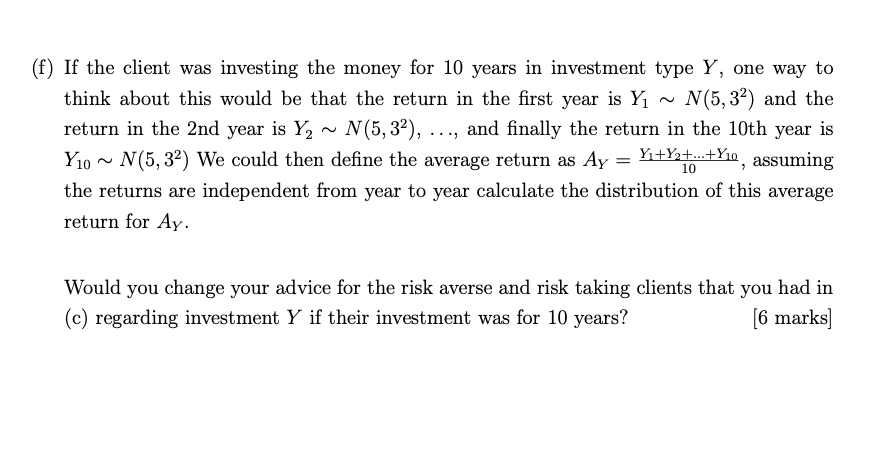Answered step by step
Verified Expert Solution
Question
1 Approved Answer
Struggling with part e) sections ii & iii as well as well as part f) in this question. Manage to solve most of the other
Struggling with part e) sections ii & iii as well as well as part f) in this question. Manage to solve most of the other sections. And could formulas be provided because it helps me understand how the to solve them.
a) 0.0013
b) 0.4338
c) if he is risk averse he souls go for investment X and if he's a risk taker he should go for Y
d) k = 2
e)i) mean is 4 and var is 3.5
ii) ?
iii) ?
f) ?


Step by Step Solution
There are 3 Steps involved in it
Step: 1

Get Instant Access to Expert-Tailored Solutions
See step-by-step solutions with expert insights and AI powered tools for academic success
Step: 2

Step: 3

Ace Your Homework with AI
Get the answers you need in no time with our AI-driven, step-by-step assistance
Get Started


